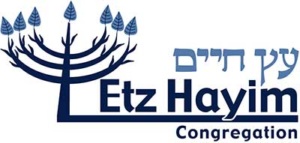Each year the Rabbi comes to us asking what part of the service we are interested in pontificating on. At the start, I gracefully accepted my assignments, but as time wore on, I became brave enough to ask for specific ones. So after speaking on the Martyrology two years ago, I specifically begged to return to the same part of the service this Yom Kippur. There is a very good reason for this—this summer we spent a good deal of time in Greece visiting various places such as Corfu, Olympia, Crete, Mykonos, Rhodes, Santorini, and of course, Athens, not to mention the neighboring port of Kusadasi, in Turkey, where one finds the monumental archeological site of Ephesus.
While these places are all different, the one thing many of them have in common is a past Jewish community. Jews came to Asia Minor and Greece as early as the 5th century BCE, after the destruction of the First Temple, and we have written records of a community in Ephesus which had apparently existed for hundreds of years by the early Common Era. The most famous site at Ephesus is the Celsus Library, whose floor contains a faint etching of a menorah! In addition, there are many stones bearing Jewish symbols that have been recycled over the centuries, which lead scholars to believe the community had a synagogue here.
Heading about 75 miles south, just off the coast we come to the ruins of Priene near Miletus, where a large stone was found with a menorah relief. The stone, now in a nearby museum, led to the 19th-century discovery of a similar synagogue dating to the 4th to 7th century CE, hundreds of years after nearby Ephesus. The designs are clear as we saw the tumbled stones of a small building, in ruins, where once Jews worshipped for centuries. Sadly, these are the only remains of a once-thriving Jewish community. We will probably never know what happened to them.
Few tourists in Greece hit the port of Gythio or Gythion, the ancient seaport for Sparta, located on the southern tip of the Peloponnese peninsula. We stopped there in July and hired a brilliant guide to take us to the famous caves at Diros on the opposite side of the Mani Peninsula (the so called middle finger of the Peloponnese). Our guide Dmitris turned out to be an archeologist who knew much more than we could ever dream of, as he had worked on many excavations in the region over the years. There is a long tradition of a now long-gone “Romani” Jewish community in the Mani region, and nary any proof of their existence. Dmitris told us of an excavation he had worked on, under a new resort hotel that was going up several years earlier. On our return to DC, I received an email from him with yet-unpublished photos he had taken at this site, which is now closed to the public. The mosaics are clearly symbolic of a menorah and are faintly akin to many we see in similar sites in Israel today. Sadly the hotel is built, the mosaics are hidden to us, and we will probably never truly know the extent of this Jewish community, which has now been assimilated beyond recognition.
When we speak of the Jewish community in this ancient region, it is of millennia, as it is clearly the first place Jews ventured to the north and west of Israel. Of course, this does not include the Exodus trip to the south, nor the exile to Persia to the east after the destruction of the First Temple.
Our journeys also took us just to the east to Rhodes, a mere 400 miles from Israel, where Jews were inhabitants of the island for centuries. Today we find the remains of a Jewish quarter that flourished after the Inquisition due to the influx of Sephardi Jews from Spain and Italy. As late as the end of World War I, over 4000 Jews lived here, flourishing amongst the locals with four synagogues, a Jewish school, and a yeshiva. By the time of the Nazi occupation, one half the Jewish population was gone. The remaining 1,522 souls were deported to their deaths in what is called “the longest march,” a 9-day trip by cargo boat to Athens and then a 13-day cattle wagon train to Auschwitz. Our guide spoke about her grandmother who harbored a Jewish man during the war. He managed to survive, along with 150 other Jews. Today, one synagogue remains and still functions. Kahal Shalom was built in 1577 and is a true gem with mosaic floors and a history worthy of any museum. Before the war it housed an 800-year-old Torah, which was miraculously saved by a Turkish religious leader. Sadly, the people are gone now and the community members number only in the dozens. While there, we witnessed the end of a ceremony, overseen by local priests and the chief Rabbi from Athens, commemorating the 70th anniversary of the end of the Holocaust.
Corfu’s Jewish community is not as old (due to its location in the Ionian Sea on the west coast of Greece) but still can trace back to the 12th century, when the community started to grow and always lived in peace with the locals. Many came from Italy, just across the sea, especially during the Inquisition. By the end of the 19th century over 7,000 Jews lived on the small island. Jews, sadly, can not seem to be free of hatred from others, and in 1891 a blood libel ravaged the community. It was actually a Jewish girl, who had been falsely recorded as being a Christian girl, who was murdered. This led to insecurity and an exile of nearly 5,000 souls, mostly to Alexandria and Italian cities. The community was further reduced to about 2,000 people, yet the four synagogues on the island still flourished. On June 9, 1944 all these Jews were rounded up and 91% of them were taken, along with the 67,000 other Greek Jews, to the camps in central Europe. 1,700 were executed 20 days later. Of the 300 forced into hard labor by the Nazis, only 150 survived—a mere 7.5% of the entire community. Half of them emigrated to the US, Israel, and elsewhere, while about 75 returned to their homes. Only one synagogue, La Scuola Greca, which dates to 1650, remains in Corfu. The island’s Jewish population today is about 55. In 2011 an arson attack on the shul destroyed many siddurim—even today this small island community struggles to subscribe.
The last place I will speak of today is Chania, on the largest Greek island of Crete, under 500 miles from the Israeli coastline. Here the Jewish community began approximately 2,300 years ago; little is known of this community that existed for so long. The roughly 300 Jews that remained on the island at the beginning of World War II were herded onto a cargo ship headed for Auschwitz. In a twist of fate, the British torpedoed the ship and nobody survived. No Jews ever returned to settle on Chania.
The synagogue here remained in ruins over the postwar decades. It was used as a dump, urinal, and kennel. In 1996, one benevolent and kind gentleman, Nikos Stavroulakis, half Greek Orthodox and half Turkish Jew, decided Chania needed a synagogue. He made it his mission to reconstruct the completely desecrated building and its mikva. After three years of painstaking work, the small Romaniote Greek synagogue reopened. Today, the mikva functions, fed by a spring, and an etrog tree stands in the front courtyard, bearing the largest etrogim I have ever seen in my life! The rear courtyard holds the tombs of the rabbis, some hundreds of years old, and a memorial to those who perished in 1944. Services were held here for some time, basically run by a few locals who had tourists to help out, but two arson attacks occurred in 2010. Now, it takes a special event or occasion to bring worshippers; the synagogue is mostly a museum for tourists. All that is left is for us to pray for the safety of those who are trying to revive our faith. Mr. Stavroulakis passed away two years ago at the age of 85 after reviving this amazing 1645 shul in a community that had existed for over two millennia, but did not have a single Jewish resident anymore. The name of that synagogue is Etz Hayyim.
The views and opinions expressed herein are those of the authors and do not necessarily reflect those of the Synagogue or Board of Directors.

